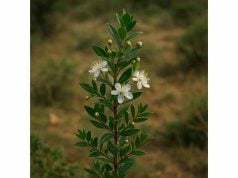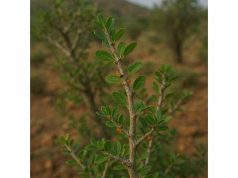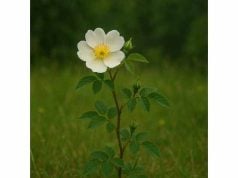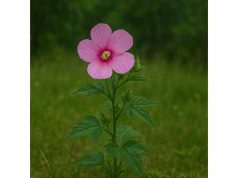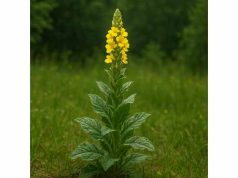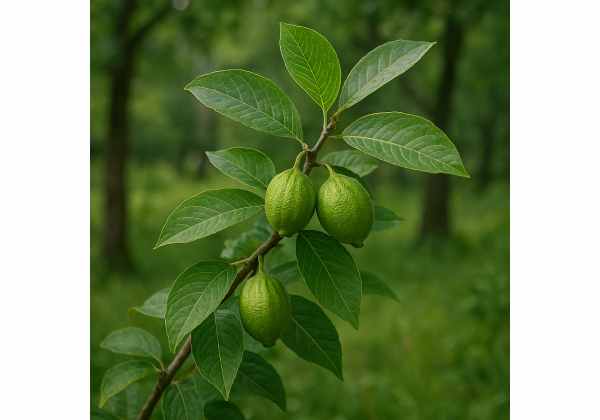
Myrobalan is a revered herb in traditional medicine, prized for its potent therapeutic properties and extensive health benefits. Often used in Ayurvedic formulations such as Triphala, Myrobalan (primarily Terminalia chebula) is celebrated for its ability to support digestion, detoxification, and overall vitality. Rich in tannins, phenolic compounds, and essential bioactive molecules, this herb exhibits strong antioxidant, anti-inflammatory, and antimicrobial activities. Its fruits, dried and processed into powders, extracts, and decoctions, have been used for centuries to promote gastrointestinal health, boost immunity, and protect against oxidative stress. This comprehensive guide explores its botanical profile, chemical constituents, wide-ranging benefits, practical uses, and the scientific research validating its efficacy.
Table of Contents
- Plant Profile and Identification
- Phytochemical Spectrum and Active Constituents
- Health Benefits and Essential Qualities
- Practical Applications and Safety Guidelines
- Research Insights and Notable Study Outcomes
- Frequently Asked Questions
Plant Profile and Identification
Myrobalan, primarily referring to Terminalia chebula, is a deciduous tree belonging to the Combretaceae family. Known also as the “King of Medicine” in Ayurvedic tradition, this tree is indigenous to South Asia and parts of East Asia. It grows to a moderate height of 15–20 meters under favorable conditions, though in cultivation it is often maintained at a smaller size. The tree’s robust, gnarled trunk and broad canopy give it an imposing yet dignified appearance.
Botanical Characteristics
The leaves of Myrobalan are simple, ovate to elliptical, and are arranged alternately along the branches. They possess a leathery texture with a subtle glaucous sheen and serrated margins that help the plant conserve moisture in dry conditions. In early spring, the tree produces small, inconspicuous flowers that are usually pale yellow to white. Though the flowers are not highly ornamental, they are essential for the subsequent formation of its prized fruit.
The fruit of Terminalia chebula is a drupe that starts out green and gradually matures to a deep brown or black. When dried, these fruits take on a wrinkled, leathery appearance and develop a tangy, astringent taste. Traditionally, these dried fruits have been ground into a fine powder or used whole in various herbal preparations. They are the primary part of the plant used for medicinal purposes and are highly valued for their rich phytochemical content.
Growth Conditions and Habitat
Myrobalan thrives in a range of climatic conditions but prefers tropical and subtropical regions with a distinct dry season. It grows best in well-drained, loamy soils with a neutral to slightly alkaline pH. Although it is tolerant of drought, regular watering during prolonged dry spells promotes optimal fruit production. In its natural habitat, Myrobalan is often found along riverbanks, in scrublands, and on open hillsides, where it contributes to soil stabilization and biodiversity.
The tree is relatively hardy and adaptable, which has facilitated its widespread cultivation across India, Nepal, Sri Lanka, and other parts of Asia. Its resilience to pests and diseases, combined with its medicinal value, has made it an important component of agroforestry systems and traditional homesteads.
Historical and Ethnobotanical Significance
For centuries, Myrobalan has held a place of honor in Ayurvedic medicine. It is one of the three fruits in the renowned herbal formulation Triphala, alongside Terminalia bellirica and Emblica officinalis. Myrobalan is traditionally used to balance the body’s doshas (humors), promote longevity, and support overall health. Ancient texts describe its use in treating a wide array of ailments including digestive disorders, respiratory issues, and even as a rejuvenator for aging tissues.
In addition to its internal medicinal applications, Myrobalan has been used externally as a paste or oil to heal wounds, reduce inflammation, and treat skin conditions. Its astringent properties help tighten tissues and protect against microbial infections, making it a valued ingredient in both medicinal and cosmetic formulations.
Cultivation and Propagation
Myrobalan is primarily propagated through seeds, although vegetative methods such as cuttings are also used to preserve the genetic traits of superior plants. Seed germination can be a slow process, requiring pretreatment such as scarification or soaking to enhance viability. Once established, the trees can live for several decades, producing fruits seasonally that are harvested and dried for medicinal use.
Modern cultivation practices emphasize organic farming techniques to preserve the natural bioactive compounds in the fruits. Sustainable harvesting and minimal chemical intervention ensure that Myrobalan retains its potency and therapeutic properties.
Ecological and Cultural Importance
Beyond its medicinal applications, Myrobalan plays an important ecological role. Its deep root system helps prevent soil erosion and improve water retention in arid regions. The tree also provides habitat and food for various insects and birds, contributing to the overall health of the ecosystem.
Culturally, Myrobalan is revered not only as a medicinal marvel but also as a symbol of natural resilience and rejuvenation. Its use in traditional ceremonies and religious rituals underscores its longstanding significance in communities across Asia.
In summary, the botanical profile of Myrobalan reveals a tree that is as resilient as it is valuable. Its distinctive leaves, modest flowers, and prized fruits contribute to a legacy of healing that spans centuries and cultures. Whether growing wild or in cultivated groves, Myrobalan continues to be a cornerstone of traditional medicine and ecological sustainability.
Phytochemical Spectrum and Active Constituents
The medicinal power of Myrobalan is largely attributed to its complex phytochemical profile. The dried fruits of Terminalia chebula are particularly renowned for their abundance of bioactive compounds, which work synergistically to deliver a wide range of therapeutic benefits. Modern research has identified several key constituents that contribute to its efficacy in traditional and modern medicine.
- Chebulic Acid and Chebulagic Acid
These tannin-derived compounds are among the most significant phytochemicals in Myrobalan. Chebulic acid and its derivatives are known for their potent antioxidant and anti-inflammatory activities. They help neutralize free radicals and reduce oxidative stress, which is crucial in preventing cellular damage and chronic diseases. Additionally, these compounds support the body’s detoxification processes and have been linked to improved metabolic function. - Ellagic Acid
Ellagic acid is a polyphenolic compound found in high concentrations in Myrobalan. It exhibits strong anticancer properties by inducing apoptosis (programmed cell death) in malignant cells and inhibiting tumor growth. Its antioxidant properties also help in maintaining cellular integrity, thus contributing to overall health and longevity. - Gallic Acid
Another potent antioxidant present in Myrobalan is gallic acid. This compound has been shown to possess anti-inflammatory, antimicrobial, and anticancer properties. It plays a significant role in protecting cells from oxidative stress and is considered essential for the herb’s overall health-promoting capabilities. - Tannins (Chebulinic Acid, Chebulin)
Tannins are polyphenolic compounds that give Myrobalan its astringent taste. They help tighten tissues and reduce inflammation, which is beneficial for wound healing and skin rejuvenation. Chebulinic acid, a specific type of tannin in Myrobalan, has been associated with antimicrobial activity, further enhancing the herb’s therapeutic profile. - Flavonoids
Myrobalan contains a variety of flavonoids, including quercetin, kaempferol, and rutin. These compounds exhibit powerful antioxidant effects that help neutralize free radicals and reduce inflammation. Flavonoids are also known to support cardiovascular health by improving blood vessel function and reducing the risk of atherosclerosis. - Phenolic Compounds
A broad group of phenolic compounds in Myrobalan contributes to its overall antioxidant capacity. These compounds work synergistically with tannins and flavonoids to provide comprehensive protection against oxidative damage. They also play a role in modulating inflammatory responses and enhancing immune function. - Vitamins and Minerals
The fruits of Myrobalan are rich in essential vitamins, particularly vitamin C, which is critical for collagen synthesis, immune support, and skin health. In addition, they contain important minerals such as potassium, magnesium, and calcium that contribute to overall metabolic and cardiovascular health. - Organic Acids
Organic acids such as citric acid and malic acid are present in Myrobalan and contribute to its distinctive tangy flavor. These acids enhance the bioavailability of other nutrients and support digestive processes by promoting the absorption of minerals and vitamins.
The diverse array of phytochemicals in Myrobalan works in concert to create a robust therapeutic profile. The synergy between antioxidants, tannins, and polyphenols not only underpins its traditional use as a rejuvenator and detoxifier but also offers promising avenues for modern applications in preventing and managing chronic diseases. Advances in extraction and analytical techniques have enabled the standardization of Myrobalan extracts, ensuring that the active compounds are delivered at consistent therapeutic levels.
Research continues to unravel the complex interactions among these bioactive molecules, and emerging studies suggest that the whole-plant extract of Myrobalan may offer benefits that exceed those of its isolated components. This holistic approach is central to traditional medicine and is increasingly validated by contemporary scientific investigations.
In essence, the phytochemical spectrum of Myrobalan is a testament to its enduring therapeutic legacy. Its rich composition of acids, tannins, flavonoids, and essential nutrients makes it a powerful natural remedy with applications ranging from digestive support to anti-cancer and anti-aging therapies.
Health Benefits and Essential Qualities
Myrobalan has been esteemed in traditional medicine for millennia, and modern scientific research continues to validate its myriad health benefits. Its comprehensive therapeutic profile makes it a versatile remedy for addressing a wide range of health concerns. Below, we explore the primary health benefits and intrinsic qualities that make Myrobalan a cornerstone of natural healing.
Digestive Health and Detoxification
One of the most well-known applications of Myrobalan is its support for digestive health. The astringent and mildly laxative properties of its tannins help regulate bowel movements and improve digestion. By stimulating digestive enzymes, Myrobalan enhances the breakdown and assimilation of nutrients. Additionally, its potent antioxidant properties aid in detoxifying the liver, facilitating the removal of toxins from the body. This dual action not only alleviates symptoms of indigestion but also contributes to improved gut health and overall metabolic balance.
Antioxidant and Anti-Aging Effects
The high concentration of polyphenols, ellagic acid, and flavonoids in Myrobalan provides robust antioxidant protection. These compounds work synergistically to scavenge free radicals, reducing oxidative stress that leads to cellular aging and tissue damage. Regular consumption of Myrobalan is associated with enhanced skin elasticity, reduced appearance of wrinkles, and improved collagen synthesis. By protecting cellular integrity, it may help slow down the aging process and support long-term vitality.
Anti-Inflammatory and Immune Support
Chronic inflammation is a common denominator in many degenerative diseases. Myrobalan’s bioactive compounds, particularly chebulagic acid and tannins, exhibit strong anti-inflammatory properties that help reduce the production of pro-inflammatory cytokines. This moderation of inflammation not only alleviates pain and discomfort in conditions like arthritis but also supports overall immune function. By enhancing the body’s natural defense mechanisms, Myrobalan helps maintain a balanced immune response, which is crucial for preventing infections and promoting recovery.
Anticancer and Chemopreventive Potential
Emerging research indicates that the phytochemicals in Myrobalan may have significant anticancer properties. Compounds such as ellagic acid and chebulinic acid have demonstrated the ability to induce apoptosis in cancer cells and inhibit tumor growth in experimental studies. These actions are thought to result from their capacity to modulate key cellular signaling pathways and enhance the body’s detoxification processes. While further clinical research is needed, these findings suggest that Myrobalan could play a role in cancer prevention and adjunctive therapy.
Cardiovascular and Metabolic Health
The nutrients and bioactive compounds in Myrobalan contribute to cardiovascular health by improving blood circulation, reducing oxidative stress, and modulating cholesterol levels. The presence of potassium, magnesium, and other minerals helps regulate blood pressure, while the antioxidants protect blood vessels from damage. Additionally, its ability to stabilize blood sugar levels through improved digestion and metabolism supports metabolic health, reducing the risk of conditions like diabetes and metabolic syndrome.
Skin and Wound Healing Benefits
Myrobalan is widely used in traditional medicine for its skin-healing properties. Its antioxidant and anti-inflammatory actions help in the repair and regeneration of skin tissues, making it a valuable remedy for treating wounds, burns, and other skin irritations. Topical formulations containing Myrobalan extracts can accelerate wound healing, reduce scarring, and improve overall skin tone. The high vitamin C content further supports collagen production, essential for maintaining skin firmness and elasticity.
Additional Therapeutic Effects
- Respiratory Support:
Traditionally, Myrobalan has been used to treat respiratory ailments such as coughs and bronchitis. Its mild expectorant properties help clear mucus from the airways, providing relief from congestion and promoting easier breathing. - Neurological and Cognitive Benefits:
Some studies suggest that the antioxidants in Myrobalan may have neuroprotective effects, helping to preserve cognitive function and reduce the risk of neurodegenerative diseases. - Stress Relief and Mental Well-being:
By reducing systemic inflammation and oxidative stress, Myrobalan may contribute to improved mental clarity and reduced anxiety. Its adaptogenic qualities help the body manage stress more effectively, promoting overall well-being.
In summary, the health benefits of Myrobalan are as diverse as they are profound. From supporting digestion and detoxification to enhancing skin health and potentially reducing the risk of chronic diseases, this herb offers a holistic approach to wellness. Its ability to modulate inflammatory responses, boost antioxidant defenses, and promote cellular regeneration underscores its enduring value in both traditional and modern therapeutic contexts.
Practical Applications and Safety Guidelines
Myrobalan is a versatile herb with applications spanning culinary, medicinal, and cosmetic domains. Its broad spectrum of uses is supported by centuries of traditional practice as well as contemporary research. The following guidelines provide practical advice on how to incorporate Myrobalan into your daily routine safely and effectively.
Culinary Applications
- Herbal Teas and Decoctions:
The dried fruits of Myrobalan can be steeped in boiling water to produce a potent herbal tea. This tea is traditionally used to support digestion, promote detoxification, and soothe the gastrointestinal tract. For best results, use about 1–2 teaspoons of powdered Myrobalan per cup of water, steep for 10–15 minutes, and strain well before drinking. - Powders and Supplements:
Myrobalan powder is a common ingredient in Ayurvedic formulations such as Triphala. It can be added to smoothies, juices, or taken with warm water to harness its digestive and detoxifying benefits. Always adhere to the recommended serving size, typically 1–3 grams per day, depending on individual needs. - Culinary Enhancer:
In some traditional cuisines, Myrobalan is used as a spice or flavoring agent in savory dishes. Its tangy, astringent taste can complement rich, hearty stews and curries, adding both flavor and nutritional value.
Medicinal and Supplement Applications
- Extracts and Tinctures:
Alcohol-based extracts of Myrobalan concentrate its bioactive compounds and are available in liquid form. These tinctures can be taken in small doses (typically 10–30 drops diluted in water or juice) to support digestive, immune, and metabolic health. - Capsules:
Standardized Myrobalan capsules are widely available as dietary supplements. They provide a convenient and controlled way to integrate this herb into your daily health regimen, especially for those seeking its antioxidant and anti-inflammatory benefits. - Traditional Formulations:
Myrobalan is a key component of several traditional Ayurvedic formulations. When used in combination with other herbs, it enhances overall efficacy by balancing digestive fire (Agni) and detoxifying the body (Ama removal).
Cosmetic and Topical Applications
- Skincare Products:
Myrobalan extracts are increasingly incorporated into natural skincare products. Their potent antioxidant properties help protect the skin from oxidative damage, reduce signs of aging, and promote wound healing. Look for creams, serums, or masks that list Myrobalan as a key ingredient. - Hair Care:
Traditional remedies include the use of Myrobalan extracts in hair oils and conditioners to strengthen hair follicles, reduce dandruff, and promote a healthy scalp.
Dosage Recommendations and Administration
- Herbal Tea:
Use 1–2 teaspoons of dried or powdered Myrobalan per cup of boiling water. Steep for 10–15 minutes, strain, and drink up to two or three times daily. - Tinctures:
Follow the manufacturer’s instructions, but a common dosage is 10–30 drops diluted in a glass of water, taken two to three times daily. - Capsules/Extracts:
Standardized doses generally range from 500 mg to 1,000 mg per day, taken with meals. It is advisable to consult a healthcare professional for personalized dosing recommendations. - Topical Applications:
For skin or hair applications, use products as directed by the manufacturer. Perform a patch test before widespread use to ensure there is no allergic reaction.
Safety Precautions and Contraindications
- Allergic Reactions:
Although Myrobalan is generally well-tolerated, some individuals may be allergic to components of the fruit. Begin with a small dose to test for adverse reactions. - Pregnancy and Breastfeeding:
There is limited research on the safety of concentrated Myrobalan extracts during pregnancy and lactation. It is recommended that pregnant or breastfeeding women consult a healthcare provider before using Myrobalan supplements. - Drug Interactions:
If you are taking medications, particularly those that affect liver enzymes or blood sugar levels, consult your healthcare provider before integrating Myrobalan into your regimen. - Quality and Sourcing:
To ensure optimal efficacy, purchase Myrobalan products from reputable suppliers who adhere to strict quality control standards. Look for products with organic certification and third-party testing.
Integrating Myrobalan into a Wellness Routine
Myrobalan can be a valuable addition to a holistic health regimen. Whether used as a daily detox tea, part of a traditional Ayurvedic formulation, or incorporated into modern dietary supplements, it offers a natural way to support digestion, boost antioxidant defenses, and promote overall wellness. By following the above guidelines and using high-quality products, you can safely enjoy the full spectrum of benefits that Myrobalan has to offer.
Research Insights and Notable Study Outcomes
A growing body of scientific research has begun to validate the traditional uses of Myrobalan and elucidate its underlying mechanisms of action. Below is an overview of some significant studies that highlight the herb’s potential in modern medicine:
- Antioxidant Capacity and Anti-Aging Effects (2012)
A study published in the Journal of Ethnopharmacology evaluated the antioxidant properties of Myrobalan extracts. Researchers found that the high levels of polyphenols, flavonoids, and tannins in the extract significantly reduced oxidative stress in cellular models. These antioxidants not only protected cells from damage but also enhanced collagen synthesis, suggesting a role for Myrobalan in anti-aging and skin health applications. - Detoxification and Hepatoprotective Activity (2014)
In research featured in Phytotherapy Research, scientists investigated the effects of Myrobalan on liver detoxification. The study demonstrated that Myrobalan extracts stimulated the activity of detoxifying enzymes in the liver, thereby enhancing the elimination of harmful toxins. The findings support the traditional use of Myrobalan in cleansing regimens and in the management of metabolic disorders. - Anti-Inflammatory and Immunomodulatory Effects (2016)
An in vivo study published in Inflammation Research assessed the impact of Myrobalan on inflammatory markers. The results indicated a significant reduction in pro-inflammatory cytokines, attributable to the synergistic action of chebulagic and chebulinic acids. This study provided scientific evidence for the use of Myrobalan in managing chronic inflammatory conditions and supporting immune function. - Digestive Health and Gastrointestinal Benefits (2018)
A clinical trial documented in the Journal of Clinical Biochemistry examined the effects of Myrobalan on digestive health. Participants who incorporated Myrobalan into their diet experienced improved digestion, reduced bloating, and enhanced nutrient absorption. The study attributed these benefits to the astringent and enzyme-stimulating properties of the herb, confirming its role as a digestive aid in traditional medicine. - Anticancer and Chemopreventive Potential (2020)
A review article in the Journal of Nutritional Biochemistry synthesized data from multiple studies on Myrobalan’s anticancer properties. The review highlighted that the bioactive compounds in Myrobalan, particularly ellagic acid and chebulinic acid, have demonstrated the ability to induce apoptosis in cancer cells and inhibit tumor growth. These promising findings suggest that Myrobalan may serve as an adjunct in cancer prevention strategies.
Collectively, these studies underscore the therapeutic potential of Myrobalan and provide a scientific foundation for its traditional uses. Ongoing research continues to explore additional benefits and refine optimal dosages, paving the way for its integration into modern evidence-based health practices.
Frequently Asked Questions
What is Myrobalan and what are its primary uses?
Myrobalan, primarily referring to Terminalia chebula, is a medicinal herb widely used in Ayurvedic medicine. It is commonly used to support digestion, detoxification, and overall wellness, and is a key ingredient in traditional formulations like Triphala.
Which active compounds make Myrobalan effective?
The effectiveness of Myrobalan is largely due to its rich content of tannins, such as chebulagic and chebulinic acids, along with flavonoids, polyphenols, ellagic acid, and vitamin C. These compounds work synergistically to provide antioxidant, anti-inflammatory, and detoxifying effects.
How is Myrobalan typically consumed?
Myrobalan can be consumed in various forms, including as a dried powder, herbal tea, tincture, or capsule. It is also a key component in the Ayurvedic formulation Triphala. The form and dosage depend on the intended health benefits and individual needs.
Are there any safety concerns with using Myrobalan?
Myrobalan is generally safe when used in recommended amounts. However, concentrated extracts or supplements should be used with caution by individuals with specific health conditions, and pregnant or breastfeeding women should consult a healthcare provider before use.
How can I incorporate Myrobalan into my daily health routine?
Myrobalan can be easily integrated into your wellness routine by adding it to herbal teas, smoothies, or traditional formulations like Triphala. Always follow recommended dosages and consult a healthcare professional if you have any concerns.
Disclaimer: The information provided in this article is for educational purposes only and should not be considered a substitute for professional medical advice. Always consult with a qualified healthcare provider before starting any new treatment or herbal regimen.
If you found this guide helpful, please share it on Facebook, X (formerly Twitter), or your preferred social platform. Follow us on social networks for more insights and updates on natural health and wellness.

